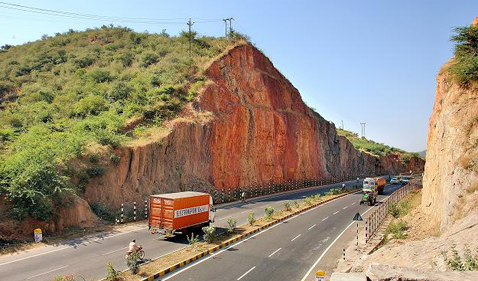
The hybrid annuity model (HAM) for development of national highways has taken off with National Highways Authority of India planning to deploy this mode for a few packages of the Delhi-Meerut Expressway. Bidding for the first package estimated to cost Rs.664 crore is currently underway and is scheduled to close on September 11, 2015.
The hybrid annuity model is the latest mode of implementation that combines the virtues of both PPP and EPC modalities. The need for a via media was felt as pure PPP-based avenues like BOT-Toll and BOT-Annuity found receding interest from private investors. In FY15, for instance, only five out of the 35 projects awarded by NHAI were on BOT mode while an overwhelming majority continued their patronage to the conventional EPC route. Though there is a pickup in BOT projects this year, it cannot be deemed suggestive of revival in the BOT route. Several road developers that Projectmonitor interacted with felt that an effective way of managing developers’ project risk was called for. The hybrid annuity model promises to mitigate the overall risk—both for the authority (NHAI, in this case) and the potential developer.
Interacting with Projectmonitor, Yogesh Kumar Jain, Managing Director, PNC Infratech Ltd, a prominent road developer, was in favour of the newly-introduced modality. “Given the financial capacity constraints being faced many road developers and also lack of availability of suitable debt products aligned with revenue stream profile of highway projects, this model is expected revive the private sector participation in the road sector,” he expressed. Another industry player who requested anonymity felt that lowering the financial burden and operations risk of the developer, which are important aspects of the hybrid annuity model, would certainly revive private sector interest in national highway development.
In the hybrid annuity mode also called DBOT-Annuity mode, National Highways Authority of India (the authority or grantor of concession) would share 40 per cent of the total project cost. The private developer will bring in 60 per cent. This, by itself, reduces the financial burden on the developer. Even for NHAI, it means lesser financial outgo when compared with the pure EPC mode where NHAI has to finance the entire project cost.
Another important aspect of the HAM route is that NHAI would take the responsibility of toll collection and refund it to the developer, in installments, over a ten-year period. This is critical to the private developer as it decimates the project risk. Toll represents the revenue for the developer. Oftentimes, actual toll collections are far lesser than those envisaged, leading to lower returns on investment to the developer. Add to this the inevitable project implementation delays that threaten to vitiate the developer’s revenue model.
As far as NHAI is concerned, the best model would certainly have been the BOT-Toll route where the developer is entrusted with the entire project chain—financing, construction, operation and maintenance—during the concession period. There is no financial outgo for NHAI; the agency only takes responsibility of providing encumbrance-free land. However, with BOT-Toll, or even BOT-Annuity for that matter, finding few takers, NHAI was left with no choice but the EPC route. Hence, NHAI does stand to gain as it would only share 40 per cent of the total project cost as against 100 per cent in the EPC route.
There is another advantage that can manifest over a period of time. Currently, a road contract that aspires to turn developer through a BOT-Toll project needs to have a significant risk-bearing capacity of project financing, execution and operation (toll collection). Now with financing risk reduced to 60 per cent and toll-collection risk taken up by NHAI, under the HAM philosophy, India’s national highway development programme could see the emergence of a new breed of small and medium developers.
The pace of national highway development does need acceleration as target-achievement has not been too inspiring. For the current year, FY16, the government has targeted to complete 10,950 km of national highways against which only 1,733 km were completed as of July 31, 2015. This implies a significant shortfall in achievement, even on a pro-rata basis. The hybrid annuity model could very well be catalyst for revving up private sector interest and hasten the pace of national highway development.











